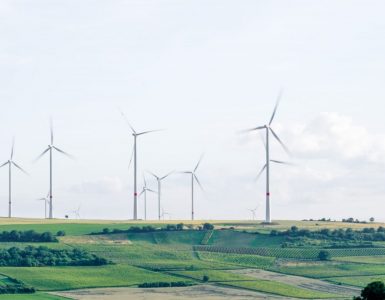United Parcel Service (UPS), an American multinational logistics company that delivers more than 20 million packages per day, pioneered a unique initiative whereby its delivery vehicles minimize the use of left turns on roads, which in turn helped UPS improve business efficiency, lowered fuel consumption, and reduced carbon emissions.
The company, founded in 1907, is one of the largest courier companies in the world, with annual revenues of more than US$100 billion in 2022. UPS deploys thousands of vehicles to pick up and deliver millions of packages annually.
In the 1970s, the company, for the first time, started advocating a ‘no left turns’ policy in the US, where vehicles drive on the right side of the road.
Taking a left turn by vehicles often requires waiting for oncoming traffic, leading to longer idling times and increased fuel consumption. By favoring right turns or using alternative routes, UPS reduced delays and improved overall delivery efficiency.
Minimizing left turns also enhanced safety for drivers and pedestrians, as left turns at intersections can be riskier than right turns due to the need to cross oncoming traffic.
A study by the US National Highway Traffic Safety Association indicates that turning left is one of the leading “critical pre-crash events,” resulting in 22.2 percent of crashes. The study also shows that more than 60% of collisions that occur while turning or crossing an intersection involve left turns, instead of just 3% involving right turns.
The best part of this policy is for the environment. UPS’s no-left-turn strategy lowered fuel consumption and reduced carbon emissions by reducing idle time and optimizing routes. This aligns with UPS’ commitment to sustainability and environmental responsibility, as it aims to become carbon-neutral by 2050.
Over the years, the strategy has improved and employed other optimization techniques. UPS is now using sophisticated routing software to plan delivery routes that minimize the number of left turns, even if it means a longer route.
The company constantly uses advanced technology, including telematics, GPS, and algorithms, to analyze and improve its delivery operations. This includes optimizing routes, minimizing the distance traveled, and improving overall efficiency.
In 2012, UPS deployed the On-Road Integrated Optimization and Navigation (ORION) platform, providing drivers with the most efficient route for deliveries and pickups. ORION is a proprietary technology of UPS that leverages artificial intelligence and machine learning to suggest drivers’ directions while on the road.
UPS’s no-left-turn strategy is implemented in other countries where vehicles drive on the right side of the road and right turns in left-hand driving countries. As per UPS estimates for 2016, the company expected to save 10 million gallons of fuel and 100,000 metric tonnes of carbon emissions, equivalent to 20,000 cars taken off the roads.
While the specific impact of the “no left turns” strategy on fuel savings may vary, it is part of UPS’s broader efforts to enhance its operational efficiency, save costs, and reduce environmental impact.
A video by Change Started to show how avoiding left turns resulted in economic and environmental benefits for UPS.







Add comment